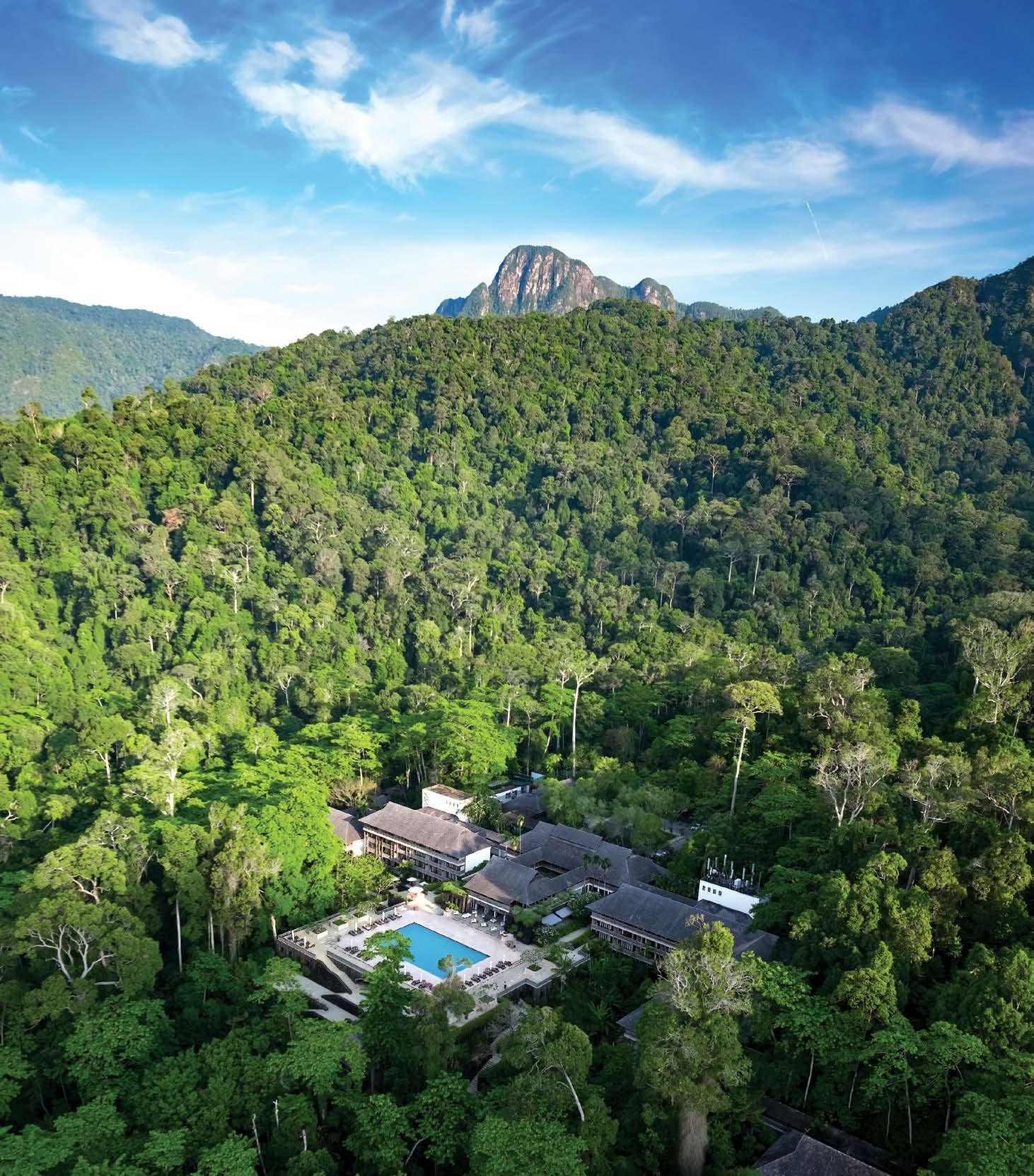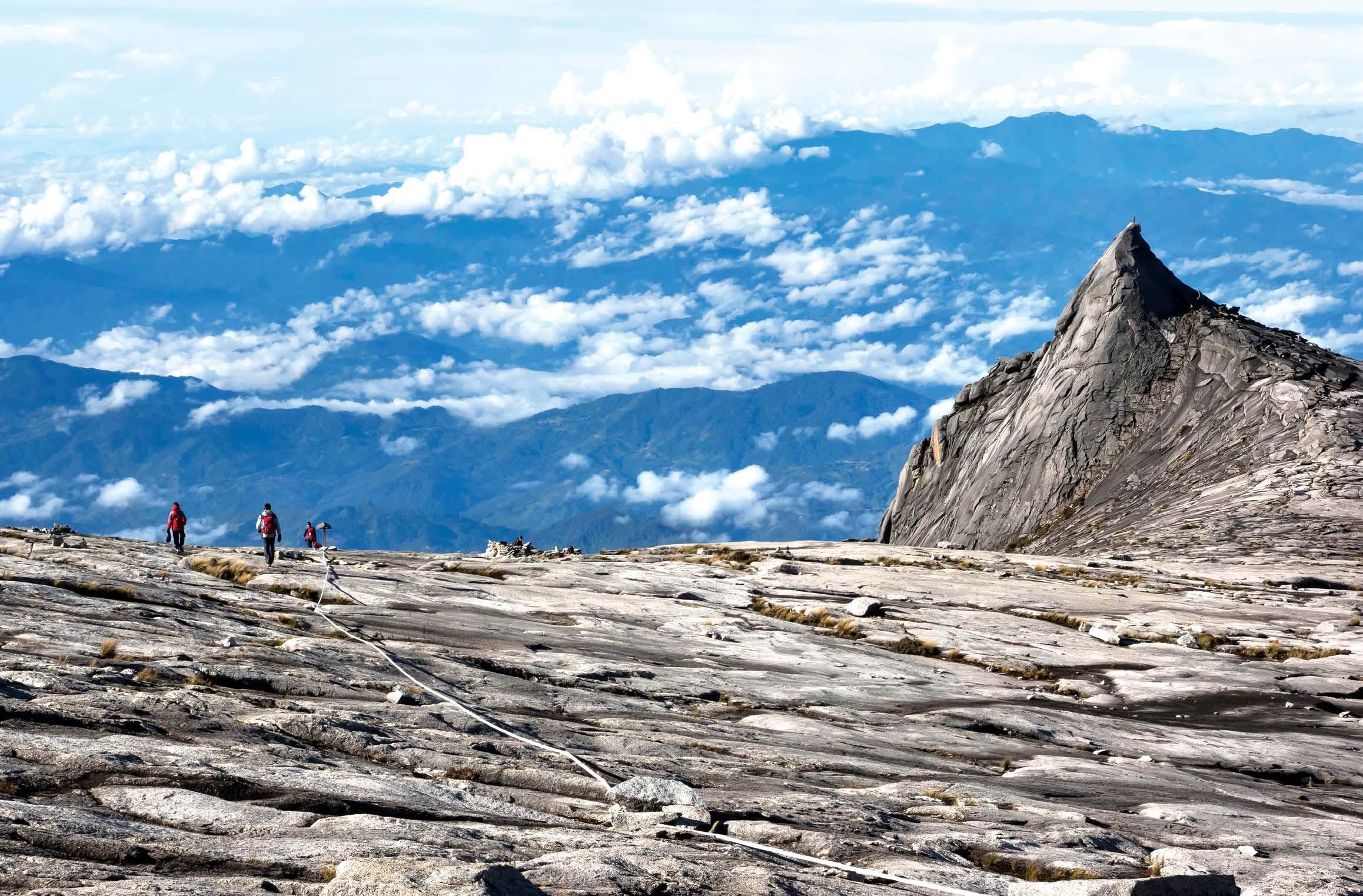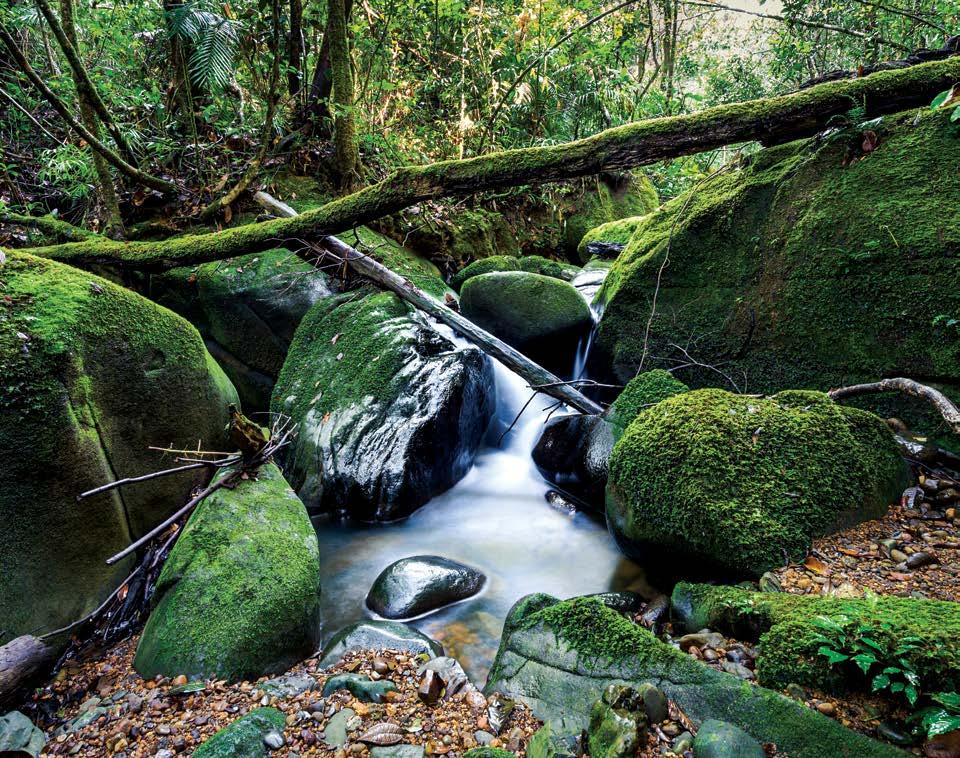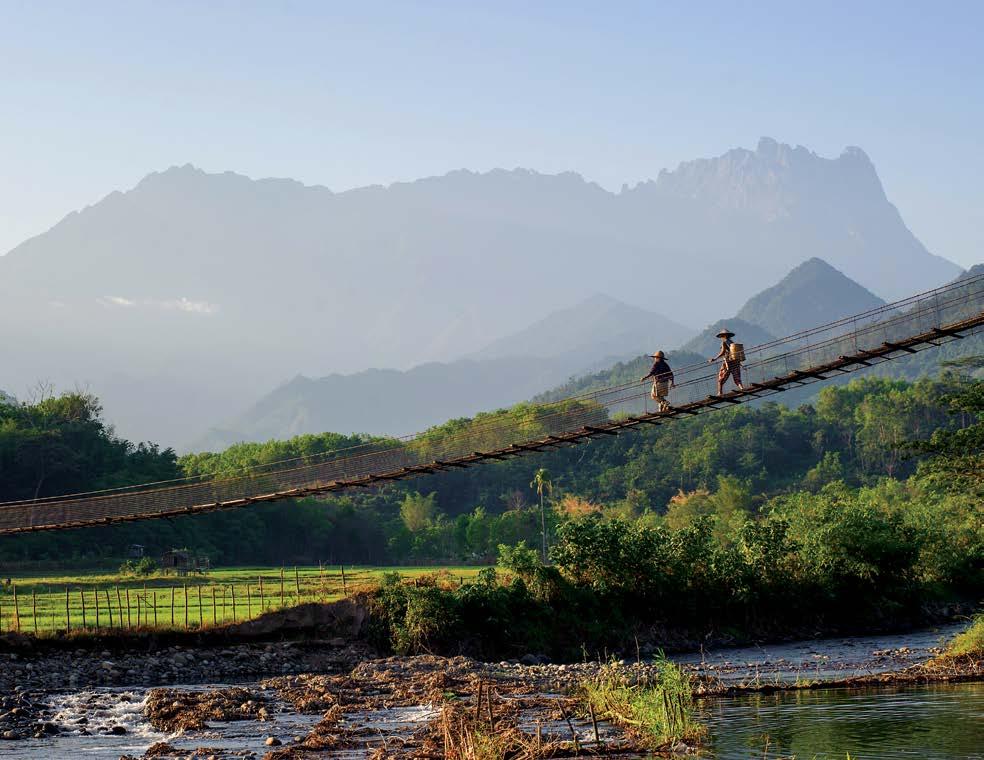

ATTITUDE OVER ALTITUDE
Located on the island of Borneo, Mt Kinabalu is the tallest mountain in Malaysia and a favoured peak for novice climbers.

An icon of Malaysia and a destination for both avid hikers and intrepid adventurers from across the region, Mt Kinabalu is a must-visit for anyone bound for Borneo. The UNESCO World Heritagelisted Gunung Kinabalu may be rated ‘climberfriendly’, but it is also the third highest peak of an island on Earth. The substantial igneous granodiorite (medium- to coarse-grained rock containing quartz, or just ‘granite’) peak, part of the Crocker Range that neatly divides the west and east coasts of Sabah, is considered in mountaineering circles to be one of the most approachable summits around, which is why it welcomes up to 135 climbers each day.
Beginning at the Timpohon Gate at 1,800m, it's a nine-kilometre hike to Low’s Peak at the 4,095m summit. Make allowances for drizzle, wind and fog, common weather at the higher altitudes, so be sure to pack spare, lightweight clothes. Climbers will also encounter a few naked rock faces and thinning air on the 2.2km vertical climb on what is mostly a muddy rock-strewn staircase covered in tree roots. But if you ever wanted to climb a proper mountain without a
team of sherpas, thermal suit, crampons and bottled oxygen, then Kinabalu is for you.

Allow two days to make the climb, remembering that a mandatory park guide must accompany you or your group on your journey. Start out in the morning after a hearty early breakfast on day one with a plan to summit and be back soaking in a hot bath by dinner time the next day. It’s a sensible timeline, but there are those who are never satisfied with sensible.
For example, the ultra-elite band of socalled 'sky runners' will set out from the base clad in high-tech sneakers, hydration backpacks and fluro shorts and be back checking their standing heart rate in well under three hours.
The trek starts out innocently enough, like a leisurely stroll in the woods, but quickly becomes more strenuous as the path gets steeper and the oxygen thinner. One flight of damp rocky steps is followed by another, then another. Fortunately, dotted along the route is a series of pondoks (picnic shelters) with rudimentary washrooms and seats from which you can take on the stunning Alpine vistas while brazen little squirrels scamper about cleaning up any food scraps left behind.
While you concentrate on your careful steps ahead, it's easy to forget that all around you is a 750 sq km UNESCO World Heritage-listed biosphere that boasts one of the richest concentrations of flora covering four distinct climate zones. From thick conifer forests, oak and colourful rhododendron to stubby little alpine bushes and medicinal flowers, the attributes of which are known only to the local Dusun community, the park is much more than just a tough uphill hike. This may explain why around 80% of visitors don't bother with the climb at all, and instead content themselves with a visit to the botanical garden that concentrates most of the park's flora into one easy location.

Designated in 1964, Kinabalu was one of the first national parks of Malaysia and was the country’s first World Heritage Site designated by UNESCO in December 2000 on account of the more than 4,500 species of flora and fauna, including 326 bird and around 100 mammal species. There are some 110 land snail species alone.
Named after the British colonial administrator and naturalist Hugh Low, who was the first known European to reach the peak, Low’s Peak juts upward like a giant meringue tart plopped atop a huge granite cake, all engulfed by the slow-motion, multicoloured throng. Here, early each morning, climbers make their final shuffle to the tip of the soaring peak in the warming rays of dawn, breathing in the satisfaction of a job well done and the prospect of a downhill return journey.
Some frequent climbers figured Kinabalu was not tough enough and devised a series of permanent ropes, pegs and steps based on the European 'via ferrata', Italian for ‘Iron Way’ system. This installation was devised by the Italian Army during the First World War to move troops and even small artillery
pieces in the Alps to get one up on their enemy, the Austrians. The military success of that can be argued, but here on the weathered granite surfaces near Low’s Peak, the experience adds a whole new dimension to Mt Kinabalu.
Suiting up for the descent means climbing into a harness with lots of metal hooks called carabiners. Add a helmet, gloves and a scrunchy-like safety strap called a ‘scorpio’ designed to catch you if you take an unanticipated tumble, and you’re all set for the adventure of a lifetime.
Formed within the last 10 to 35 million years, Kinabalu is one of the youngest mountains in the world, not counting volcanoes, and still grows at a rate of five millimetres annually. There are two via ferrata options for the junior Hillarys and Tensings; one is a challenging odyssey through jungle and across dizzying ravines called the Low’s Peak Circuit that begins at 3,776m, while another, at 3,520m, has been dubbed Walk the Torq and simply shortcuts the rocky staircase and is suitable for kids over 10 years. Both terminate at 3,411m. Like the summit itself, these routes are not to be scoffed at. The series of rungs, ropes, cables and bridges is the highest via ferrata in the world and certified by the Guinness World Records. There’s a cute stamped and verified certificate waiting for you after you unbuckle your safety suit in the hut after your climb.
Mt Kinabalu may be on many climber’s bucket list and prove the perfect two day foray into the jungles of Borneo, but for anyone who completes the climb and also takes the time to wonder at the marvellous biodiversity of the huge park, it’s a doubly rewarding, and uniquely Malaysian, experience.
from top left:
Sabahan villagers walk through a hanging bridge across a river with beautiful majestic Mount Kinabalu in the background; Mt Kinabalu's surrounding national park is famed for its diversity of flora and fauna; the peak rising above the rainforest
 clockwise
clockwise
